Abstract
OBJECTIVE. Intense debate exists concerning the number of homeless people in the United States. Previous studies, counting currently homeless people, have provided point-prevalence estimates of homelessness but have been criticized on methodological grounds. This study reports lifetime and 5-year prevalence estimates of homelessness using a different methodological approach. METHODS. Random-digit dialing was used to interview 1507 adults living in households with telephones in the 48 contiguous states in the fall of 1990. Respondents were asked whether they had ever been homeless and if so, where they had slept while homeless. RESULTS. Lifetime and 5-year prevalence of all types of homelessness combined were 14.0% (26 million people) and 4.6% (8.5 million people), respectively. Lifetime "literal homelessness" (sleeping in shelters, abandoned buildings, bus and train stations, etc.) was 7.4% (13.5 million people). Five-year (1985 through 1990) prevalence of self-reported homelessness among those who had ever been literally homeless was 3.1% (5.7 million people). CONCLUSIONS. The magnitude of the problem of homelessness is much greater than most previous attempts to enumerate homeless people have led us to believe. This finding requires reconsideration of inferences about the causes of homelessness that were derived from point-prevalence studies of currently homeless people.
Full text
PDF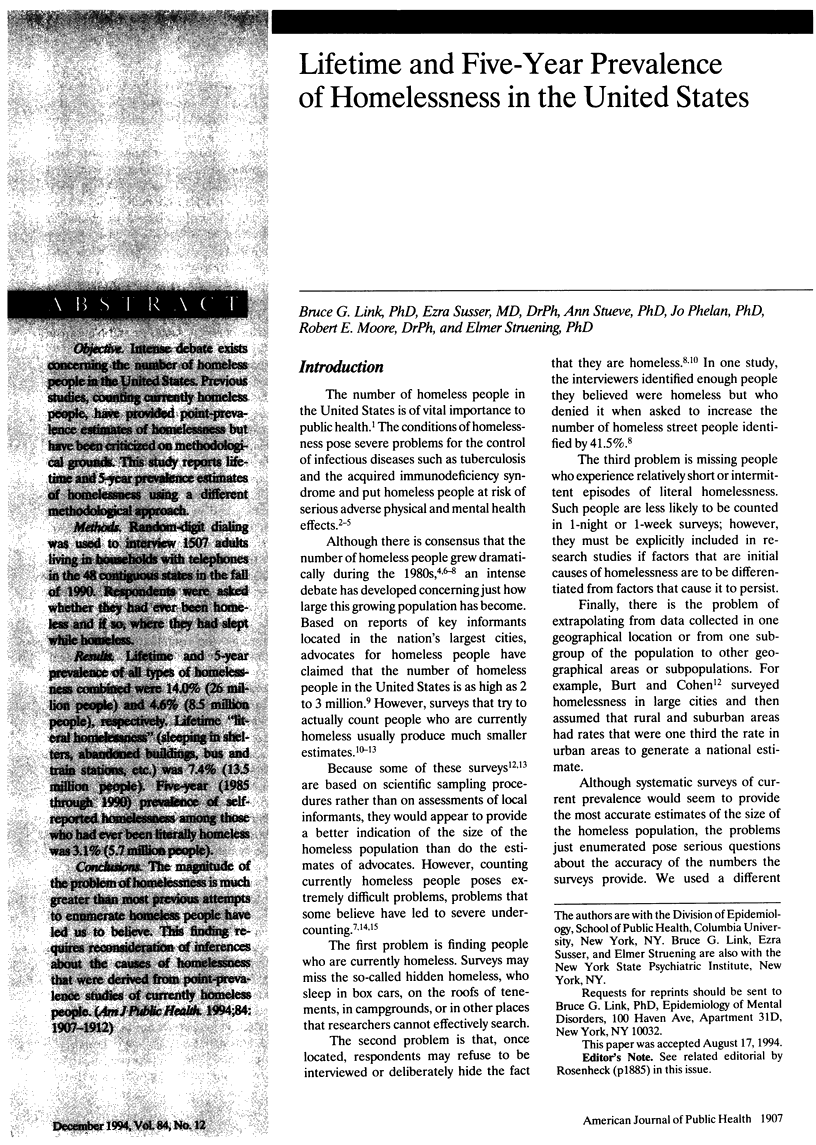
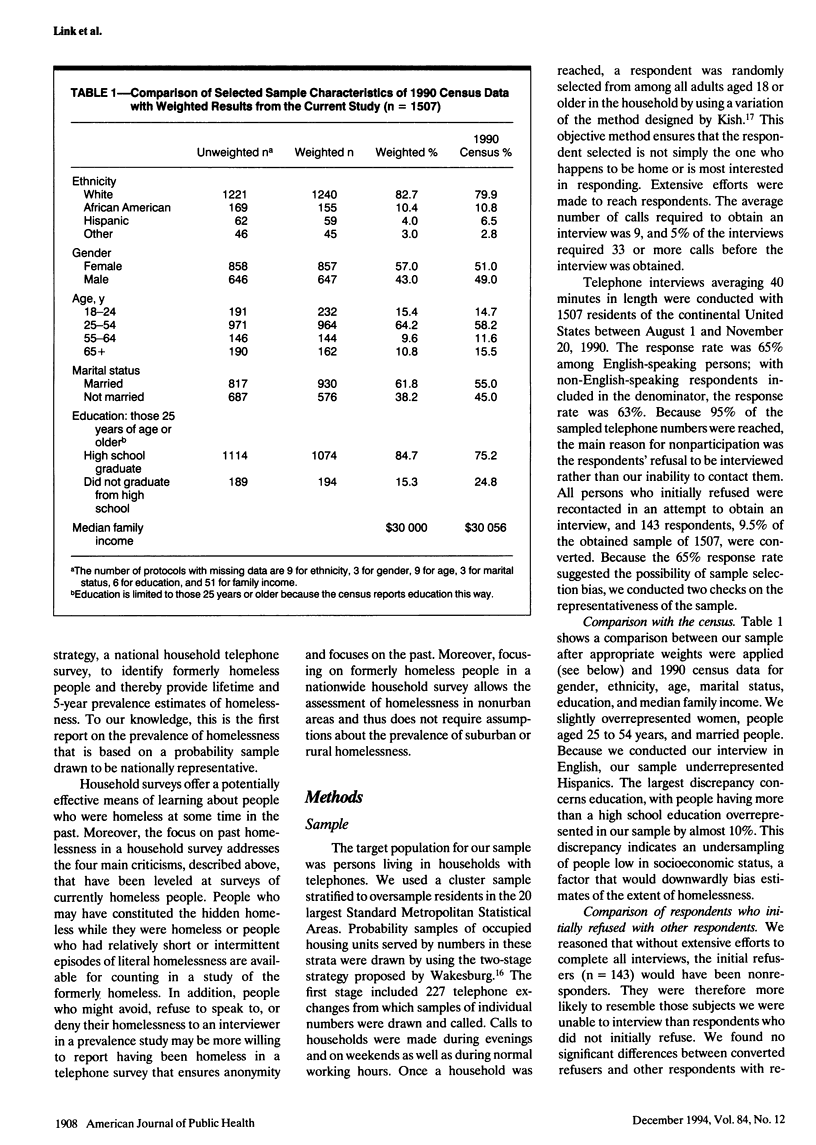
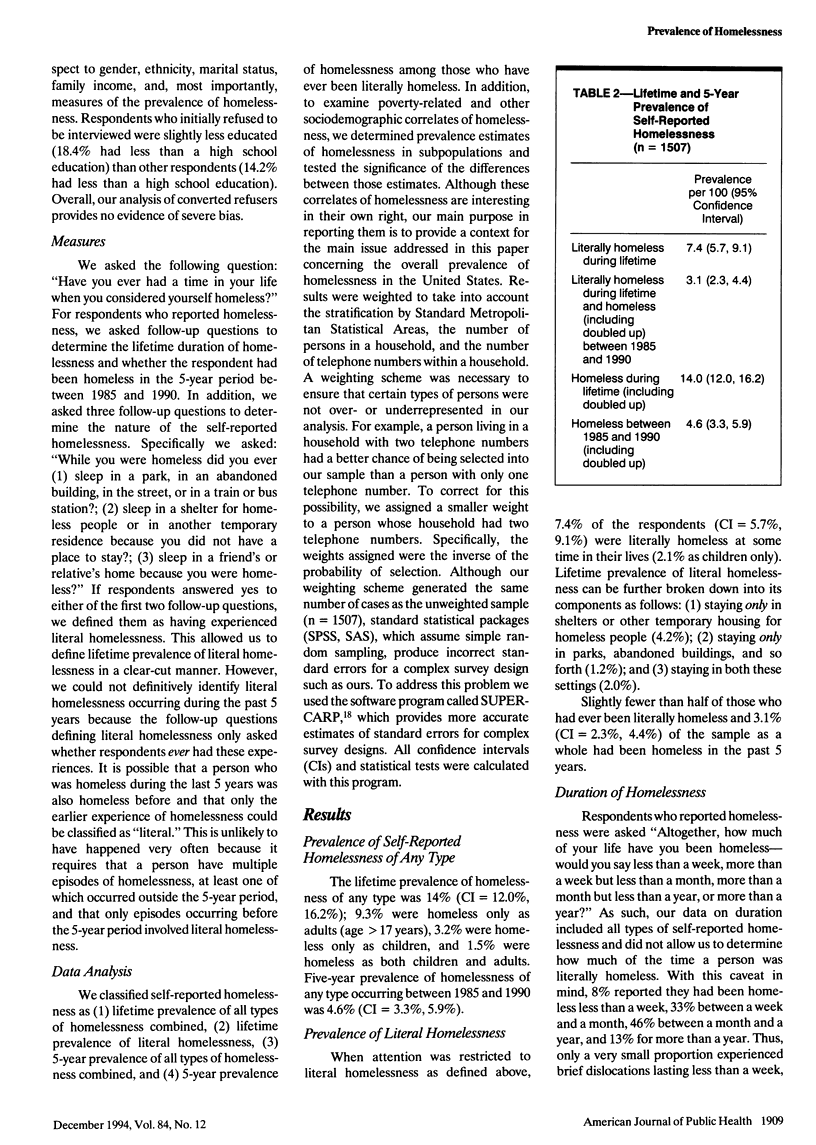
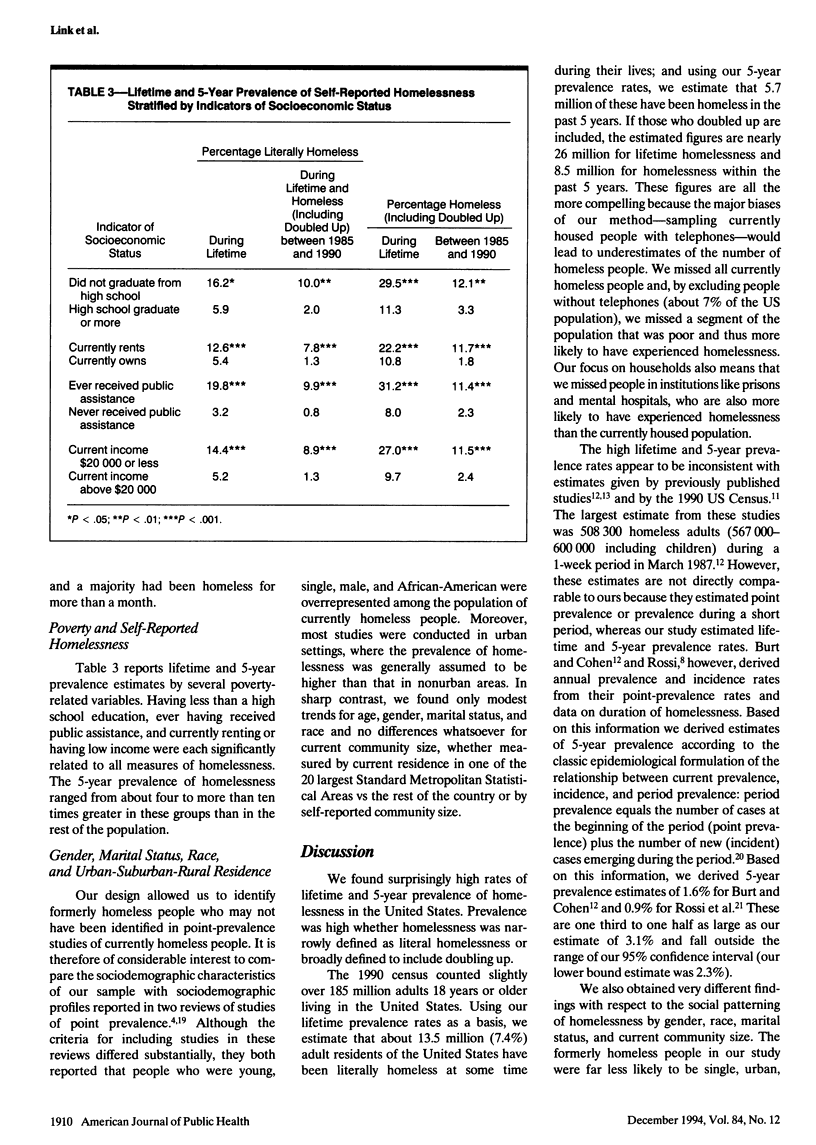
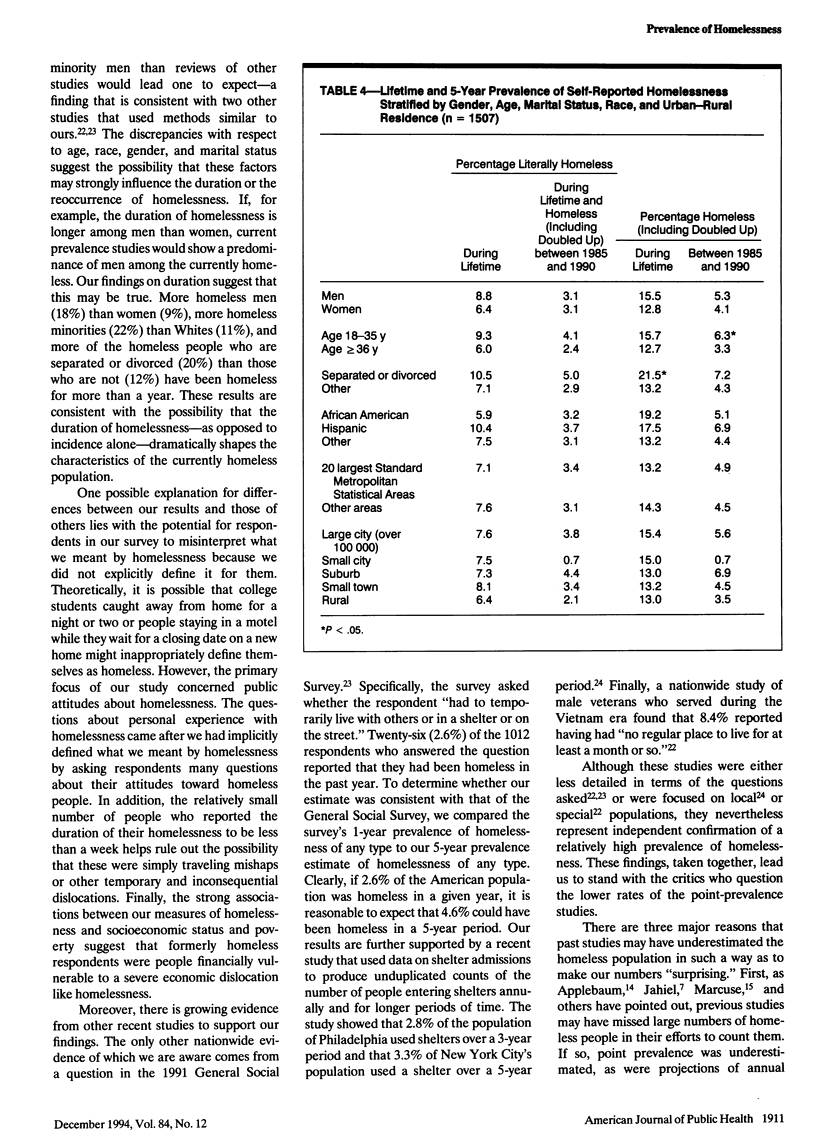
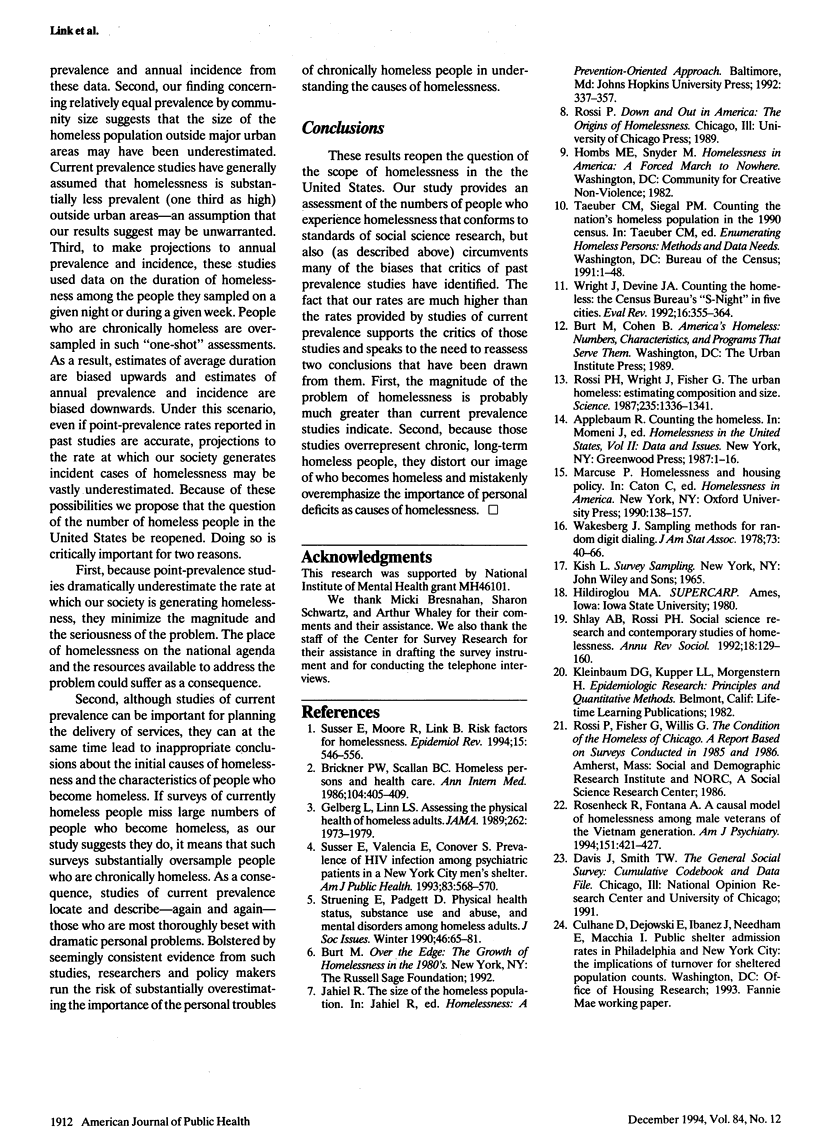
Selected References
These references are in PubMed. This may not be the complete list of references from this article.
- Brickner P. W., Scanlan B. C., Conanan B., Elvy A., McAdam J., Scharer L. K., Vicic W. J. Homeless persons and health care. Ann Intern Med. 1986 Mar;104(3):405–409. doi: 10.7326/0003-4819-104-3-405. [DOI] [PubMed] [Google Scholar]
- Gelberg L., Linn L. S. Assessing the physical health of homeless adults. JAMA. 1989 Oct 13;262(14):1973–1979. [PubMed] [Google Scholar]
- Rosenheck R., Fontana A. A model of homelessness among male veterans of the Vietnam War generation. Am J Psychiatry. 1994 Mar;151(3):421–427. doi: 10.1176/ajp.151.3.421. [DOI] [PubMed] [Google Scholar]
- Rossi P. H., Wright J. D., Fisher G. A., Willis G. The urban homeless: estimating composition and size. Science. 1987 Mar 13;235(4794):1336–1341. doi: 10.1126/science.2950592. [DOI] [PubMed] [Google Scholar]
- Susser E., Moore R., Link B. Risk factors for homelessness. Epidemiol Rev. 1993;15(2):546–556. doi: 10.1093/oxfordjournals.epirev.a036133. [DOI] [PubMed] [Google Scholar]
- Susser E., Valencia E., Conover S. Prevalence of HIV infection among psychiatric patients in a New York City men's shelter. Am J Public Health. 1993 Apr;83(4):568–570. doi: 10.2105/ajph.83.4.568. [DOI] [PMC free article] [PubMed] [Google Scholar]


